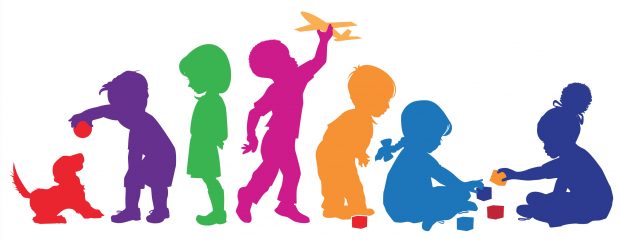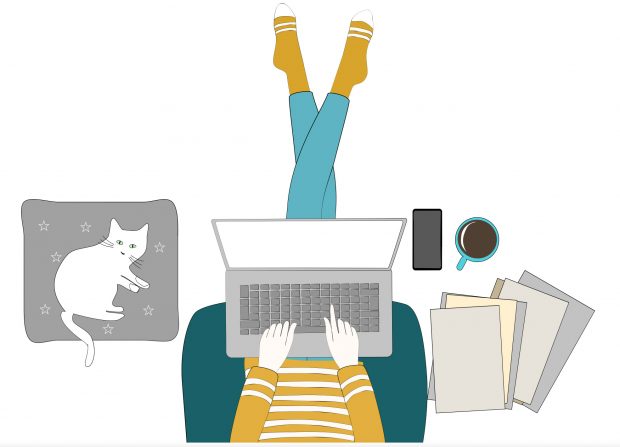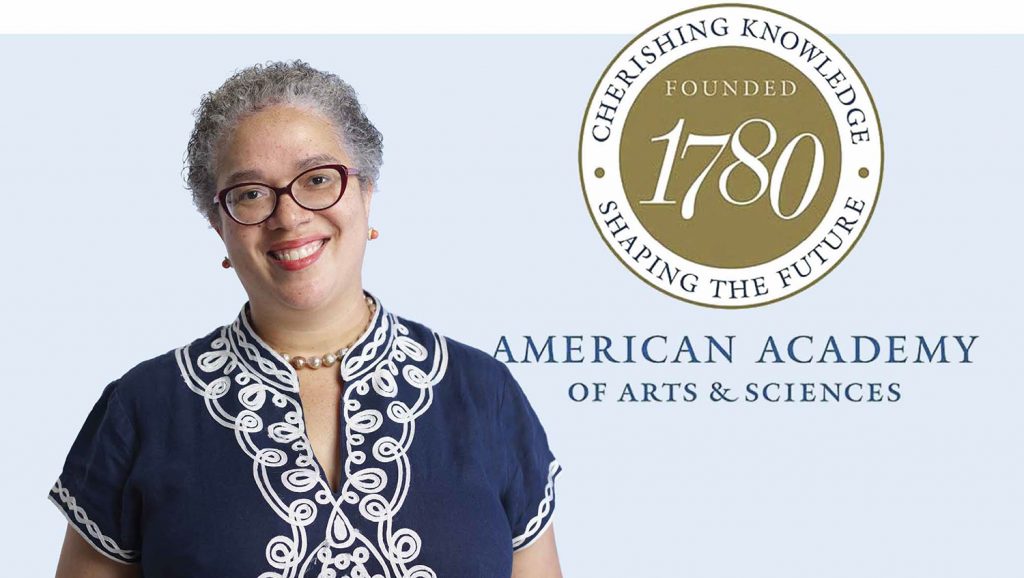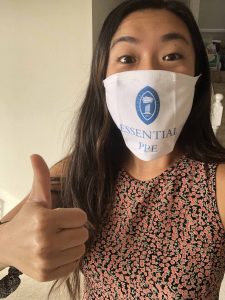 As the country continues to grapple with the COVID-19 pandemic, childcare is among the toughest challenges for parents and employers alike.
As the country continues to grapple with the COVID-19 pandemic, childcare is among the toughest challenges for parents and employers alike.
Prior to the pandemic, about half of U.S. families reported having trouble finding care for a young child, according to the Center for American Progress. That number shot to nearly two-thirds this past spring as childcare centers closed and other in-home caretakers were told to stay home during lockdown orders.
“Now more than ever, children have come to the forefront,” says Shadiah Sigala ’06, as she holds her two-year-old on her lap during a PCM interview conducted via Zoom.
She speaks from personal experience as the mother of two young children, but also as the co-founder and CEO of Kinside, an app that assists employers offering childcare benefits. When an employer partners with Kinside, its employees can use the service to browse and find reliable childcare options for their families.
Sigala’s impetus for her newest entrepreneurial effort was inspired in part by her own experience with motherhood.
“I had a kid while co-founding my former company [Honeybook.com]. I now had a baby, and then my family leave period ended. How do I do this as a working mother? So I instituted the first family-related benefits, policies and organizational structures at the company, which was undergoing a big baby boom. As a company executive I asked myself, what is the experience like for my employees? And how do we show that we’re paying attention to this? So definitely, this was born out of personal need and our employees’ needs.”
Sigala says the pandemic has exposed the fact that the childcare system in America is both fragile and under-resourced. “To give context, about two-thirds of households in the U.S. are dual working households where both parents work,” she says. “On top of that, working mothers take on a larger load of childcare. Working mothers average 22 hours of childcare per week, on top of their full-time jobs.”
The pandemic has only made things worse.
“It really doesn’t matter if you are a frontline worker, an hourly worker, which is usually who suffers the most silently, or if you are middle management or an executive at a company. We’re all in this together,” she says. “And this is usually where we find an inflection point—where those in power and influence experience a pain point and they feel compelled to fix it.”
So what are employers doing to alleviate the challenges of childcare for their employees? “They realize that this is literally impacting their very bottom line,” says Sigala. “On top of productivity losses, it is estimated that about one in five working parents is saying that either they or their partner are considering leaving the workforce. Imagine that 20 to 30% of your employees are experiencing this? That is a significant portion of your employee base.”
“The most obvious incentive is that employers are offering subsidies for childcare for the first time, especially those employers who have employees that are essential and on the front lines. For example, we’re seeing many health organizations, who employ our nurses and doctors, folks who are absolutely essential. In order to keep them going, their employers are offering a childcare subsidy.”
Other employers are making their parental benefits more robust. That can mean anything from maternity or paternity leave to support for new parents who are returning to work, including childcare.
Sigala points out that working parents, and particularly mothers, are not only caring for children but sometimes caring for multiple members of their family, whether they live with them or not.
“Employers are really looking at this very holistically. We’re finding that suddenly they want it al,l or at least more, when it comes to family benefits. Whereas before, they were considering adding one new benefit; now they’re considering several, ranging from mental health to fertility to childcare. And whereas these benefits used to be considered perks, organizations are strategically moving their energy and efforts of family benefits into the ‘essential’ bucket.”

 As coronavirus cases spiked across the country in the fall, companies continued to recalibrate their work environments. Working from home may have seemed a temporary measure back in the spring, but it’s now becoming a more permanent solution for many.
As coronavirus cases spiked across the country in the fall, companies continued to recalibrate their work environments. Working from home may have seemed a temporary measure back in the spring, but it’s now becoming a more permanent solution for many. “Crickets.” That’s all Daniel Post Senning ’99 of The Emily Post Institute—great-great-grandson of the grande dame of etiquette herself—says he heard about manners the first two weeks after COVID-19 hit the U.S. hard. But etiquette-in-place soon became a thing.
“Crickets.” That’s all Daniel Post Senning ’99 of The Emily Post Institute—great-great-grandson of the grande dame of etiquette herself—says he heard about manners the first two weeks after COVID-19 hit the U.S. hard. But etiquette-in-place soon became a thing. Severine von Tscharner Fleming ’04 is a national leader in a growing agricultural movement encouraging young farmers to grow food to be sold close to market and serve as stewards of the nation’s dwindling supply of irrigable farmland. She is a founding board member of the Agrarian Trust and the director of Greenhorns, a grassroots cultural organization for young farmers that produces an annual literary journal for working agrarians called the New Farmers Almanac. Additionally, she runs Smithereen Farm, a certified organic wild blueberry, seaweed and orchard operation in Maine that hosts summer camps, camping and educational workshops. She also speaks nationally and internationally on land access, food sovereignty and the needs and vision of the incoming generation of farmers and ranchers. PCM’s interview with her has been edited for length and style.
Severine von Tscharner Fleming ’04 is a national leader in a growing agricultural movement encouraging young farmers to grow food to be sold close to market and serve as stewards of the nation’s dwindling supply of irrigable farmland. She is a founding board member of the Agrarian Trust and the director of Greenhorns, a grassroots cultural organization for young farmers that produces an annual literary journal for working agrarians called the New Farmers Almanac. Additionally, she runs Smithereen Farm, a certified organic wild blueberry, seaweed and orchard operation in Maine that hosts summer camps, camping and educational workshops. She also speaks nationally and internationally on land access, food sovereignty and the needs and vision of the incoming generation of farmers and ranchers. PCM’s interview with her has been edited for length and style. One impact of the pandemic that remains to be seen is its effect on young learners. There are widespread concerns about K–12 learning loss—particularly among children who were just learning to read and students on the wrong side of the digital divide who lacked consistent access to high-speed Internet, computer devices and, in many cases, a suitable space to study.
One impact of the pandemic that remains to be seen is its effect on young learners. There are widespread concerns about K–12 learning loss—particularly among children who were just learning to read and students on the wrong side of the digital divide who lacked consistent access to high-speed Internet, computer devices and, in many cases, a suitable space to study. Mental health went mainstream in 2020. Headlines about coping strategies and self-care proliferated as millions of people experienced anxiety, sleep problems and depression related to health fears, financial setbacks and social isolation during the pandemic.
Mental health went mainstream in 2020. Headlines about coping strategies and self-care proliferated as millions of people experienced anxiety, sleep problems and depression related to health fears, financial setbacks and social isolation during the pandemic. Second Home, an innovative co-working space in Hollywood, has garnered a lot of attention due to its design features. Sixty pods, which occupy a large parking lot, are embowered with trees, are fancifully painted, and contain large workable windows that produce a sun-drenched environment for those settling in for a day’s work.
Second Home, an innovative co-working space in Hollywood, has garnered a lot of attention due to its design features. Sixty pods, which occupy a large parking lot, are embowered with trees, are fancifully painted, and contain large workable windows that produce a sun-drenched environment for those settling in for a day’s work.
 During the pandemic, the Philosophy, Politics and Economics Program, known on campus as PPE, saw its initials co-opted in the national media as the pandemic focused public attention on shortages of personal protective equipment. So, when Professor Eleanor Brown ’75, chair of the program, was casting about for some memento to send to the graduating PPE seniors, she hit upon the idea of co-opting a piece of personal protective equipment “to proclaim the essential nature of this quintessential liberal arts degree.” Modeling the PPE’s new PPE in the photo above is Rachel Oda ’20.
During the pandemic, the Philosophy, Politics and Economics Program, known on campus as PPE, saw its initials co-opted in the national media as the pandemic focused public attention on shortages of personal protective equipment. So, when Professor Eleanor Brown ’75, chair of the program, was casting about for some memento to send to the graduating PPE seniors, she hit upon the idea of co-opting a piece of personal protective equipment “to proclaim the essential nature of this quintessential liberal arts degree.” Modeling the PPE’s new PPE in the photo above is Rachel Oda ’20.